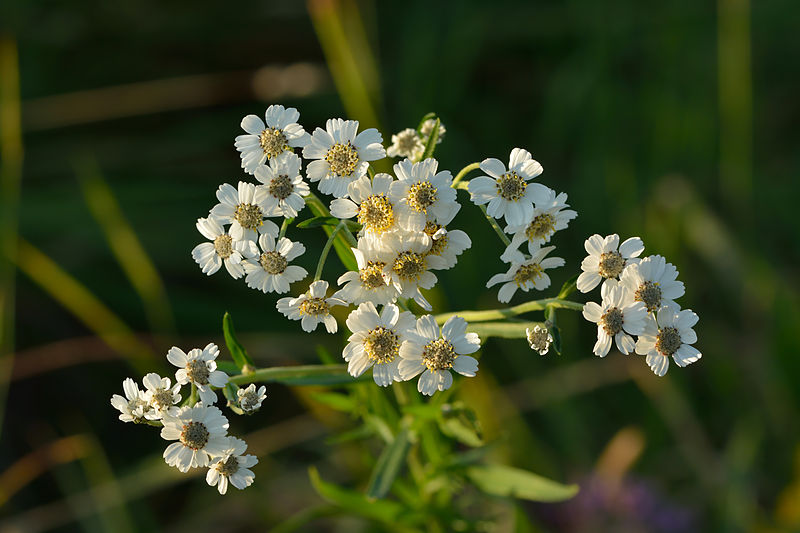|
|
|
|
Family: Asteraceae
sneezeweed
|
Perennials, 30-60+ cm (rhizomatous). Stems 1, erect, branched distally, proximally glabrate, distally villous or tomentose. Leaves sessile; blades linear to narrowly lanceolate, 3-10 × 3-5 mm, (bases slightly clasping, margins usually serrulate, rarely subentire), faces glabrous or sparsely hairy on midveins adaxially. Heads 3-15+, in simple or compound, corymbiform arrays. Phyllaries 25-30+ in ± 3 series, (light green, midribs yellowish, margins light brown) lanceolate to oblanceolate, faces tomentose. Receptacles flat to slightly convex; paleae oblanceolate, 3-4 mm. Ray florets 8-10(-13), styliferous and sterile (45-70, pistillate, fertile, in horticultural doubles); corollas white, laminae suborbiculate, 4-5 × 4-5 mm (5-7 × 3.5-4.5 mm in doubles). Disc florets 45-75+ (sometimes 0 in doubles); corollas grayish white, ca. 3 mm. Cypselae 1.5-2 mm. 2n = 18. Flowering late Jun-mid Sep. Roadsides, disturbed sites, open fields and pastures, in sandy or gravelly soils or in moist to drying silty soils; 0-2400 m; introduced; Greenland; Alta., Man., N.B., Nfld. and Labrador (Nfld.), N.S., Ont., P.E.I., Que.; Alaska, Colo., Conn., Idaho, Ind., Maine, Mass., Mich., Minn., Mo., Mont., N.H., N.J., N.Y., N.Dak., Ohio, Pa., R.I., Vt., Wash., W.Va., Wis.; Eurasia. Rhizomatous perennial 3-6 dm; stem villous-tomentose at least above; lvs glabrous or nearly so, linear or lance-linear, 3-10 cm נ2-6 mm, sessile, acuminate, closely and rather shallowly serrate to subentire; heads several or numerous in an open-corymbiform infl, the disk 4-8 mm wide; invol 4-5 mm; rays commonly 8-10, white, 3-5 mm; disk-fls 50-75; 2n=18. Beaches, roadsides, and waste places; native to n. Eurasia, naturalized in ne. Amer. from Lab. to N.Y., w. to Minn. and Mo. July-Sept. Forms escaped from cult. often have numerous rays. Gleason, Henry A. & Cronquist, Arthur J. 1991. Manual of vascular plants of northeastern United States and adjacent Canada. lxxv + 910 pp. ©The New York Botanical Garden. All rights reserved. Used by permission. |
|
|
|


